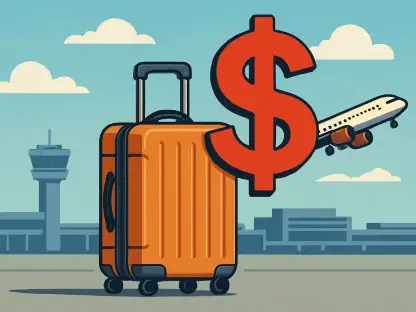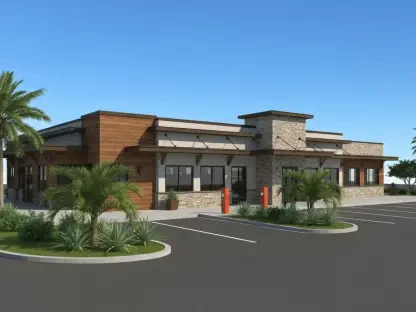In a landscape where tourism markets fiercely compete for attention, Oxfordshire has carved out a remarkable position as a standout destination in the UK. A comprehensive survey conducted by a prominent destination management organization, in collaboration with a local visitor economy partnership, reveals staggering insights: 91% of visitors from outside the county find Oxfordshire appealing, with a significant majority ready to recommend it. This data not only underscores the county’s growing influence in the tourism sector but also raises critical questions about what drives such high satisfaction and how these trends can shape market strategies. This analysis dives deep into the survey findings to explore current visitor behaviors, economic impacts, and evolving preferences, providing a roadmap for stakeholders to capitalize on Oxfordshire’s momentum in the competitive travel industry.
Dissecting Oxfordshire’s Tourism Market Dynamics
Visitor Sentiment: A Foundation of Strength
The survey paints a vivid picture of Oxfordshire as a market with exceptional visitor approval. An impressive 91% of respondents view the county as an attractive destination, while 85% are likely to advocate for it to others. Furthermore, 60% rated their overall experience as outstanding, with specific praise directed toward the cultural offerings—65% deemed them excellent—and the sense of safety, noted by 64%. These metrics highlight a robust foundation of positive sentiment that positions Oxfordshire as a trusted choice for travelers seeking quality and security.
This high level of satisfaction is a critical asset in a market where word-of-mouth and online reviews heavily influence travel decisions. However, maintaining such standards amid growing visitor numbers presents a challenge, as expectations could outpace resource availability. The data suggests that tourism operators must prioritize consistent quality to sustain this positive perception, ensuring that infrastructure and services evolve alongside demand.
Patterns of Loyalty and Engagement
Beyond initial impressions, the survey uncovers a strong trend of loyalty among visitors, a key indicator of market stability. Nearly half of the respondents, 46%, visit Oxfordshire multiple times annually, and 53% had done so within the past six months. For 39%, the decision to return stems from favorable past experiences, while 43% are drawn by the county’s historical and cultural heritage, and 32% value the variety of experiences available. This repeat visitation signals a dependable customer base, vital for long-term revenue streams.
Engagement during visits further illustrates the diversity of Oxfordshire’s appeal. A majority, 61%, frequent cafes and restaurants, 52% explore heritage sites and museums, and 33% participate in arts and cultural events. This spread of activities reflects a well-rounded market capable of catering to varied interests, though it also hints at potential underutilization of niche attractions. Stakeholders might consider targeted campaigns to spotlight lesser-known offerings, ensuring balanced growth across all sectors of the tourism economy.
Economic Pressures and Behavioral Shifts
Economic factors play a significant role in shaping visitor behavior, adding complexity to market forecasts. While 32% of respondents expect the cost of living to have no impact on their travel plans, others are adapting to financial constraints. Specifically, 24% seek more free activities, and 20% are reducing expenditures on dining during trips. Leisure spending intentions also vary, with 48% planning to maintain their budgets, 33% anticipating reductions, and 11% expecting to spend more.
These findings point to a market segment increasingly sensitive to price, which could challenge premium attractions if affordable alternatives are not developed. On the flip side, this shift opens opportunities for promoting budget-friendly experiences, such as public events or scenic walking tours, to capture a broader demographic. Addressing perceptions of Oxfordshire as a high-cost destination through strategic pricing and marketing could further bolster visitor numbers during economic uncertainty.
Booking Trends: A Move Toward Spontaneity
Another evolving trend reshaping the tourism market is the shift in booking behaviors. The survey indicates that 24% of visitors book accommodations within three months of travel, while a substantial 39% do so within just one month. This preference for shorter lead times suggests a growing inclination toward spontaneous travel, likely influenced by digital platforms that enable last-minute reservations.
This trend poses both opportunities and risks for the market. Businesses with flexible booking systems and real-time availability can capitalize on this spontaneity, potentially increasing occupancy rates. However, it also requires agility in inventory management to avoid overbooking or underutilization. Adapting to these patterns through technology-driven solutions, such as dynamic pricing models, could be a game-changer for local operators aiming to stay competitive.
Forecasting Oxfordshire’s Tourism Trajectory
Looking ahead, Oxfordshire’s tourism market appears set for sustained growth, driven by emerging preferences and strategic adaptations. The inclination toward last-minute bookings is likely to persist, necessitating investments in digital tools that enhance booking flexibility and visitor convenience. Economic pressures may further push demand for cost-effective experiences, prompting businesses to innovate with free or low-cost offerings without compromising quality.
Sustainability is also expected to gain traction as a market differentiator. Initiatives that promote eco-friendly practices, such as reducing waste at attractions or encouraging green transportation options, could resonate with environmentally conscious travelers. Additionally, fostering a welcoming atmosphere through hospitality programs can solidify visitor loyalty, ensuring that first-time guests become repeat customers. Over the next few years, integrating technology and sustainability into tourism strategies will likely be pivotal in maintaining Oxfordshire’s edge in a crowded market.
Reflecting on Insights and Charting the Next Steps
Looking back, the analysis of Oxfordshire’s tourism market revealed a destination that commanded exceptional visitor satisfaction and loyalty, with 91% finding it appealing and nearly half returning multiple times a year. Economic challenges influenced spending behaviors, while booking trends shifted toward greater spontaneity, reflecting broader changes in travel planning. These insights underscored the county’s strengths and the adaptive measures needed to navigate financial and logistical hurdles.
Moving forward, stakeholders should prioritize diversifying offerings to include affordable experiences, ensuring accessibility for varied income levels. Investing in digital infrastructure to support last-minute bookings emerged as a critical step, alongside marketing efforts to highlight hidden gems within the county. Collaborative partnerships among local businesses and tourism boards proved essential in unifying efforts to address challenges and seize growth opportunities. By focusing on innovation and inclusivity, Oxfordshire positioned itself to not only sustain but elevate its status as a leading tourism market for years to come.









